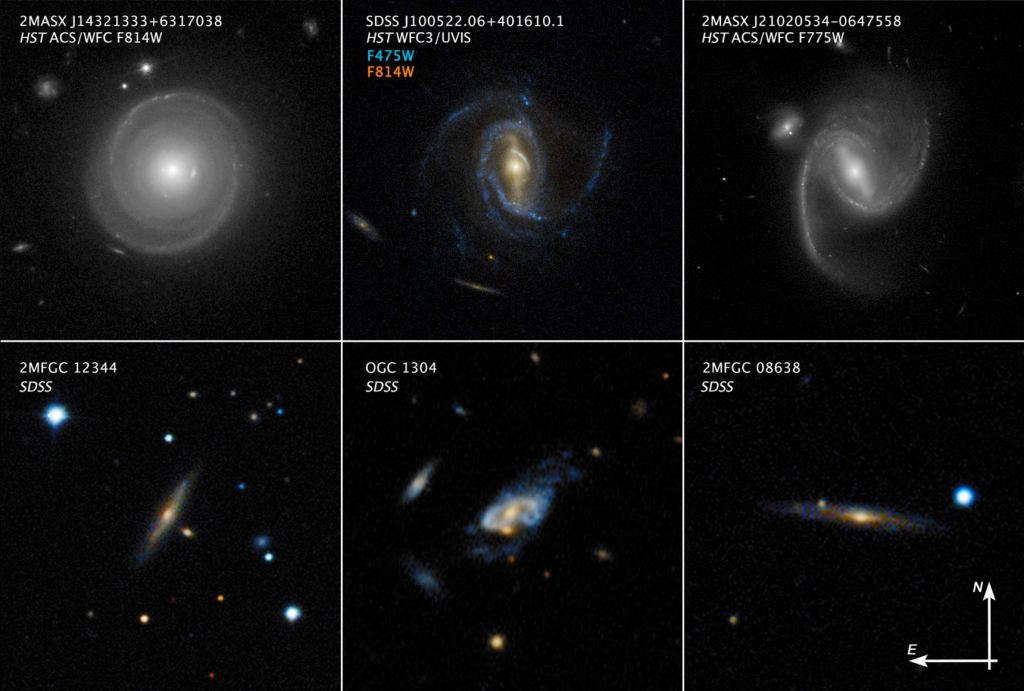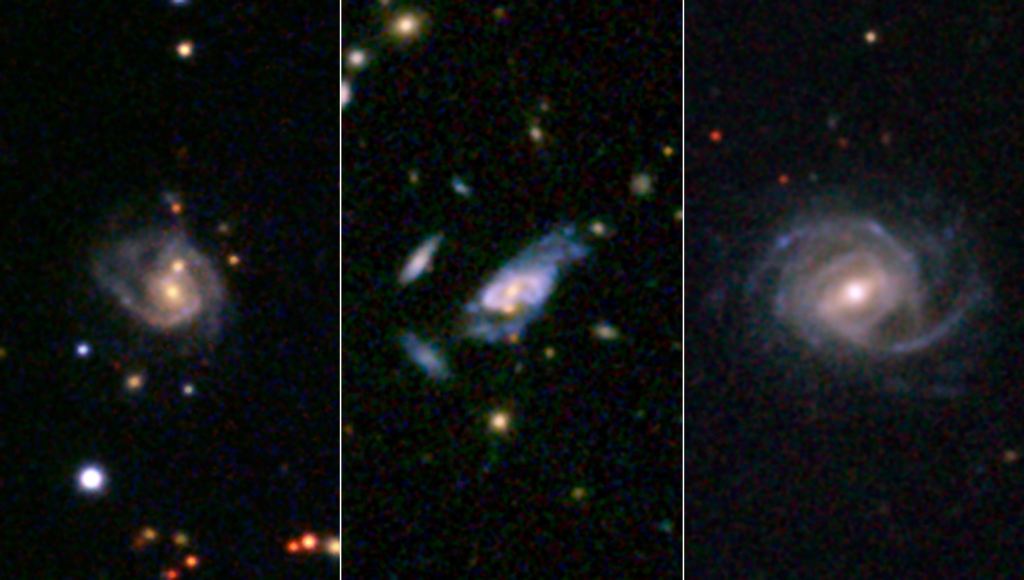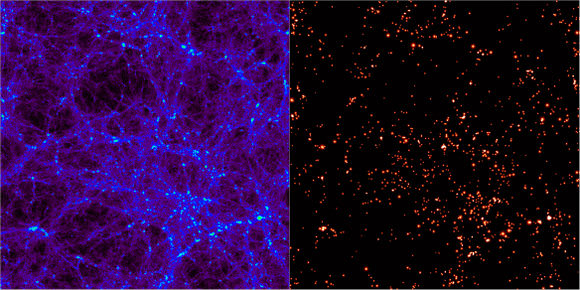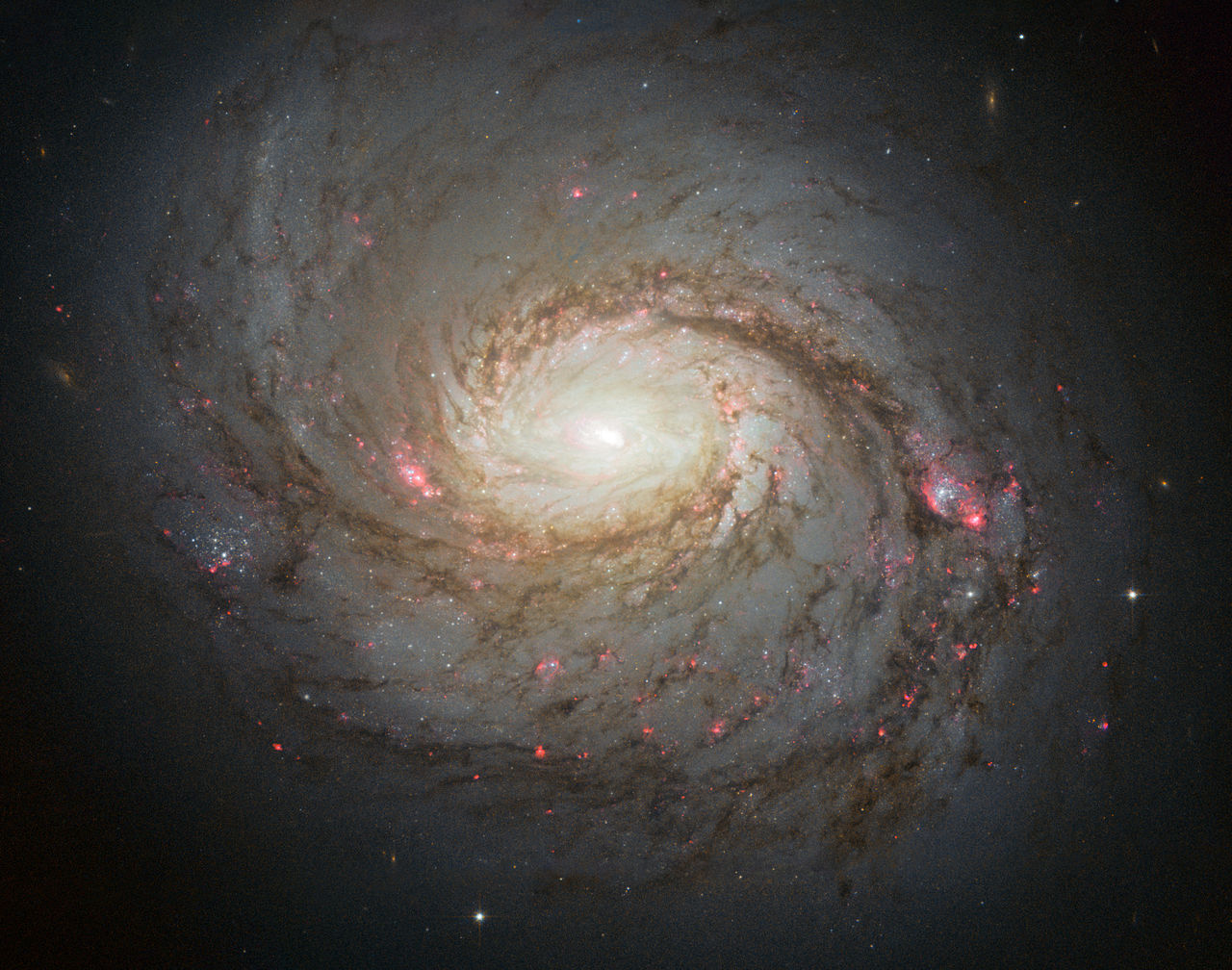It’s a difficult thing to wrap your head around sometimes. Though it might feel stationary, planet Earth is actually moving at an average velocity of 29.78 km/s (107,200 km/h; 66600 mph). And yet, our planet has nothing on the Sun itself, which travels around the center of our galaxy at a velocity of 220 km/s (792,000 km/h; 492,000 mph).
But as is so often the case with our Universe, things only get more staggering the farther you look. According to a new study by an international team of astronomers, the most massive “super spiral” galaxies in the Universe rotate twice as fast as the Milky Way. The cause, they argue, is the massive clouds (or halos) of Dark Matter that surround these galaxies.
The study, which recently appeared in the Astrophysical Journal Letters, was conducted by astronomers from the Space Telescope Science Institute (STSI), the University of Cape Town, The College of New Jersey, the Swinburne University of Technology, the University of the Western Cape, and the California Institute of Technology.

Super spiral galaxies are a relatively new phenomenon to astronomers, having only been discovered as a result of data obtained by the Sloan Digital Sky Survey (SDSS) and the NASA/IPAC Extragalactic Database (NED). Only about 100 are known to date, but what we’ve observed from these few shows that these objects are nothing short of exceptional.
In addition to being much larger than the Milky Way, they’re also brighter and contain far more stars. The largest measures about 450,000 light-years in diameter (compared to the Milky Way, which spans an estimated 100,000 light-years) and is about 20 times as massive. And based on the study was led by the researchers from the STSI, they also appear to rotate much faster.
For the sake of their study, the team relied on new data gathered with the Southern African Large Telescope (SALT) to measure the rotation curves for 23 known massive spiral galaxies. Additional data was provided by the 5-meter Hale telescope at the Palomar Observatory while NASA’s Wide-field Infrared Survey Explorer (WISE) mission provided vital data on the galaxies’ masses and rates of star formation.
As Tom Jarrett of the University of Cape Town, South Africa, said of the study:
“This work beautifully illustrates the powerful synergy between optical and infrared observations of galaxies, revealing stellar motions with SDSS and SALT spectroscopy, and other stellar properties — notably the stellar mass or ‘backbone’ of the host galaxies — through the WISE mid-infrared imaging.”

What they found was that these galaxies spin much more rapidly than the Milky Way, with the largest spinning at a rate of up to 570 km/s (350 mps) – almost three times as fast. What’s more, the team found that super spirals rotational speed vastly exceeded the mass of their constituent stars, gas, and dust. This is in keeping with what scientists have observed for decades, which would suggest that dark matter is responsible.
“Super spirals are extreme by many measures. They break the records for rotation speeds,” said Patrick Ogle, a researcher with the STSI and the lead author on the study. “It appears that the spin of a galaxy is set by the mass of its dark matter halo… This is the first time we’ve found spiral galaxies that are as big as they can ever get.”
Essentially, Ogle and his colleagues concluded that super spirals are surrounded by larger than average dark matter halos. In fact, Ogle and his team determined that the most massive halo was equivalent to about 40 trillion Solar masses. Astronomers usually expect to find this much dark matter around a group of galaxies, rather than a single one.
This study is another piece of evidence against alternative theories of gravity that attempt to rule out the presence of dark matter. A popular example is known as Modified Newtonian Dynamics (MOND), which proposes that when it comes to the most massive structures in the cosmos (galaxies and galaxy clusters) gravity is slightly stronger than would be predicted by Newton or Einstein.

However, MOND cannot account for the observed rotational speeds of super spirals, which suggests no non-Newtonian dynamics are required. Another takeaway from these observations was that super spirals contain far fewer stars than would be expected, given the massive dark matter halos that surround them. This suggests that an abundance of dark matter can actually inhibit star formation in galaxies.
The research team suggest two possibilities for why this is. On the one hand, it may be that any additional gas that is pulled into the galaxy is heated up by the rapid rotation to the point that cooling and clumping (and hence, gravitational collapse) is less likely. On the other, it is possible that the fast spin of the galaxy is disruptive to gas clouds which makes it harder for them to coalesce and collapse.
In spite of that, the super spirals that have been observed are still able to experience star formation – at a rate of about 30 solar masses a year (or 30 times that of the Milky Way). Looking ahead, Ogle and his team hope to conduct further observations in the hopes of learning more about the motion of gas and stars within the disks of super spirals.
These and other questions relating to super spirals are likely to be addressed by next-generation instruments like the James Webb Space Telescope (JWST) and the Wide-Field Infrared Space Telescope (WFIRST). Once deployed, these telescopes will be able to study more super spirals at even greater distances, which will correspondingly be at an earlier phase in
Further Reading: Hubblesite, Astrophysical Journal Letters


Earth is actually moving at an average velocity of 29.78 km/s RELATIVE TO THE SUN. Earth is moving at an average velocity of 220 km/s, plus or minus 220 km/s, RELATIVE TO THE GALACTIC CENTER. How fast is Earth moving through space/time? No one knows.